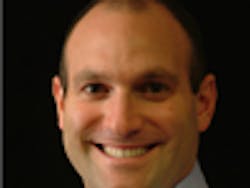A protocol for follow-up visits post-implant placement
By Scott Froum, DDS
Although the high predictability and long-term success rate of dental implants is well documented in the literature,1 complications and failures can occur. Proportional to the increase in the volume of dental implants being placed is the number of adverse events that will occur. Some complications may be relatively minor and easy to correct, while others will be major and result in the loss of the implant or prosthesis. Implant complications and failures are most likely to occur within the first year of placement of the dental implant fixture and delivery of the final prosthesis, with some studies2 suggesting complete implant failure ranging from 3% to 8%. After an implant has been restored and placed in function for the first year, failure rates are dramatically reduced and have been reported3 to be around 1%. With these statistics in mind, it can be stated that tantamount to long-term implant success is the development of a protocol for the aftercare of patients’ post-dental implant placement during the critical failure period. In my office, the following empirical protocol is followed after the dental implant has been placed in a traditional two-stage approach.
Protocol after implant placement
The patient is seen one to two weeks after dental implant placement for suture removal, postsurgical instructions, and observation of healing. Careful attention is given to the possibility of soft tissue, hard tissue, and/or dental implant infection. The patient is seen again six weeks post-placement with the expectation that soft-tissue healing should be complete. At this time, oral hygiene is reviewed and a maintenance appointment is scheduled. The patient is scheduled three months post-placement for a maintenance appointment and observation appointment. A radiograph is taken of the dental implant at this time to evaluate hard-tissue levels. Bone levels should be stable with no evidence of peri-implant platform or periapical radiolucency. At this time, the dentist can determine when the patient can be scheduled for stage II uncovering and/or restoration.
Monitoring and maintenance
After the patient has been restored with the final restoration, it is imperative that he or she understands that careful monitoring and maintenance is required to ensure long-term success. In addition, the implant surgeon and restorative dentist must decipher and communicate follow-up responsibilities of the dental implant patient. I have a relationship with my restorative dentists where I see the patient one month post-final insertion for an observation. At this visit, the soft tissue is evaluated for the presence of bleeding, suppuration, inflammation, and probing depths. If any of these exist and the restoration is cement-retained, the implant must be evaluated for cement in the subgingival peri-implant sulcus.4
Radiographic and clinical gingival inspection is useful if retained cement is suspected. The patient is then seen three months post-insertion for a maintenance visit and a standardized radiograph (if not taken at the one-month interval). Bone levels are assessed. Oral hygiene is evaluated, and instruction is given if needed. Patient occlusion is measured and adjusted if necessary. In addition to the previously mentioned factors, the soft-tissue texture, color, and amount of keratinized tissue are noted. This type of exam and maintenance interval is repeated at six months and then yearly for the first three years.
Careful monitoring and early intervention can usually prevent minor implant complications from becoming serious or irreversible. The after-care philosophy of implant placement should follow the adage: An ounce of prevention is worth a pound of cure.
Author bio
Scott Froum, DDS, is a periodontist and co-editor of Surgical-Restorative Resource e-newsletter. He is a clinical associate professor at the New York University Dental School in the Department of Periodontology and Implantology. He is in private practice in New York City. You may contact him through his website at www.drscottfroum.com.
References
1. Albrektsson T, Isidor F. Consensus report of session IV. In: Lang NP, Karring T, ed. Proceedings of the First European Workshop on Periodontology. London: Quintessence, 1994; 365-369.
2. Rosenberg ES, Cho SC, Elian N, et al. A comparison of characteristics of implant failure and survival in periodontally compromised and periodontally healthy patients: a clinical report. IJOMI. 2004; 19(6):873-879.
3. Perry J, Lenchewski E. Clinical performance and five-year retrospective evaluation of Frialit-2 implants. IJOMI. 2004; 19(6):887-891.
4. Shapoff CA, Laheh BJ. Crestal bone loss and the consequences of retained excess cement around dental implants. Compendium. 2012; 33(2).
